UV lamps: features, types and differences from LED models
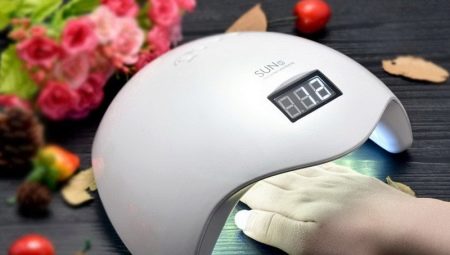
The sphere of manicure and pedicure does not stand still. New materials and technologies appear to make the nail coating durable, safe and, of course, effective. To maintain the created beauty, the nail coat must be properly dried. This can be done with an ultraviolet lamp. And it doesn't matter whether you tidy up your nails with the help of a professional master, a skillful girlfriend, or on your own.
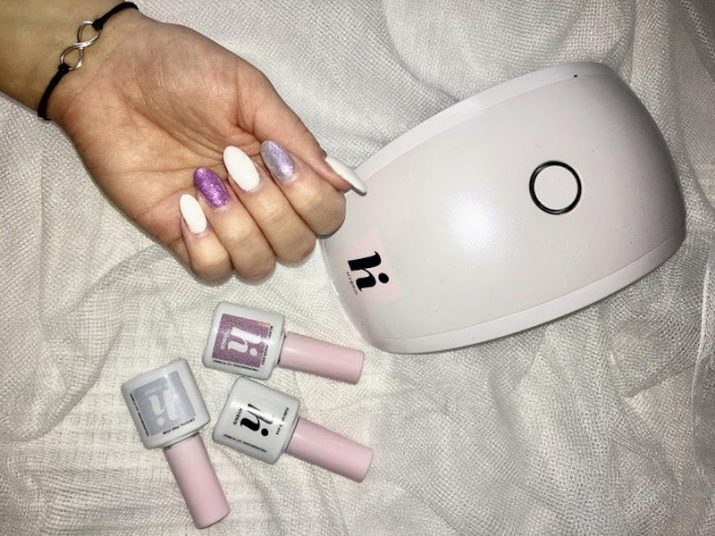
What it is?
Modern lamps not only fix the effect obtained and provide the material with the necessary strength. They also save a lot of time. Without them, the process of polymerizing materials for manicure can take more than a dozen minutes. And if you take into account the multilayer coating - then the clock. After all, first you need to apply a base, leveling layer, then one or two layers of colored varnish. And in conclusion - a gel that can fix the covering of the nail from above and from the end.
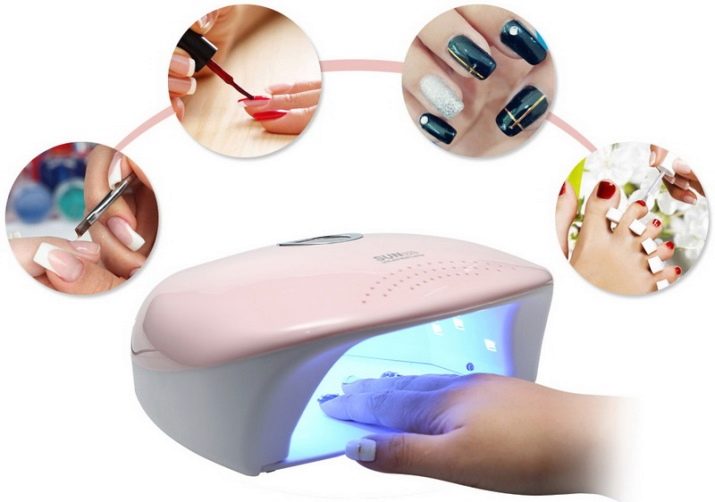
It is better to apply each subsequent layer after the previous one has completely dried. An ultraviolet lamp is definitely indispensable here. Depending on the material used for the coating and the power of the lamp, the curing process will take no more than two minutes.
The nail drying lamp is a device consisting of the following elements:
- a plastic case that performs not only a protective, but also a decorative function;
- built-in lamps (there may be several of them);
- internal reflective coating;
- a fan to prevent overheating of parts of the device and the surface of the hands;
- external switches with which control is carried out - on, off, timer settings, and so on.
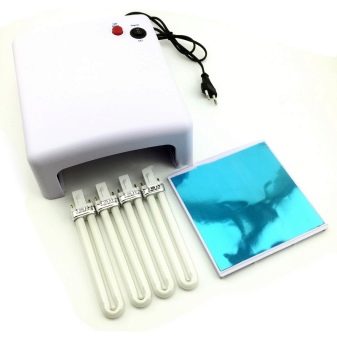
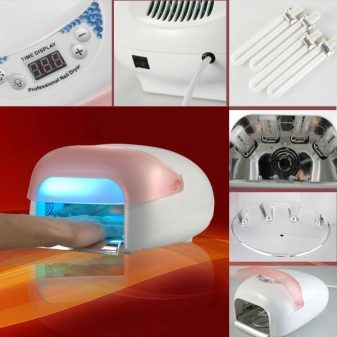
In addition to the standard set of functions, such a device may include:
- timer with light or sound indicator, ensuring strict adherence to time frames;
- pull-out bottom panel, necessary in order to make drying more convenient, for example, in a pedicure.
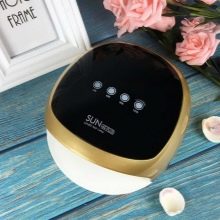
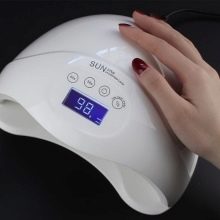
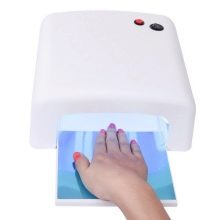
What is the difference from LED lamps?
Depending on the lamps in them, dryers can be ultraviolet (UV), light-emitting diode (LED) and gas-fired (CCFL), which are their varieties. Much less often on sale you can find devices that combine two types of lamps at once. This is necessary in order to maximize the use of the advantages of one type or another or to minimize their disadvantages.
The principle of operation of such lamps is simple, but different. UV (UV) fluorescent lamps contain a conductive gas that emits ultraviolet rays. The principle of operation of gas discharge lamps CCFL is similar, but they heat up less due to the fact that they do not have a filament, and they are more economical. In terms of the radiation spectrum, these two types of lamps are the same. LED sources emit light from special elements through which current flows. Moreover, these elements are connected by microcircuits with electric current converters. The emission spectrum of such lamps is less.
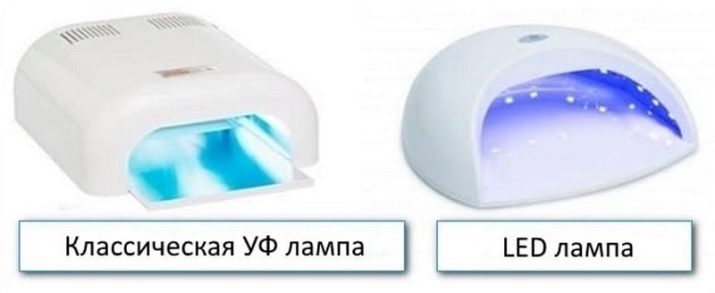
Thus, the following pros and cons can be noted.
- Despite the fact that conventional UV lamps are energy-efficient, LED lamps are more economical.
- LED bulbs do not need to be changed. Fluorescent lamps are designed for a certain number of hours of operation (this information is usually indicated on the packaging). That is, they must be replaced. But given their low cost and the fact that it takes a little more than a minute to dry, these costs can be considered insignificant.
- LED fixtures have fewer options. That is, they will cope with the usual gel polish or biogel. In addition, now there are special gel coatings adapted for them. The medium UV lamp will handle any coating.
- If you take lamps of the same power, then it will take a little more time to dry under ultraviolet light. But the polymerization (curing) in such a lamp will be more uniform. For this purpose, light sources are installed in it and on the sides.
- LED dryers are generally more compact. But if you need to dry your nails, it is better to take a larger UV device for comfortable placement.
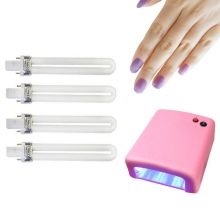
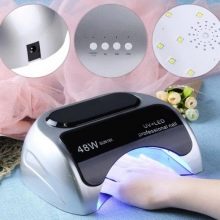
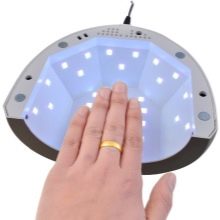
In general, it is not entirely correct to compare devices containing lamps of different radiation spectra. Basically, they are just meant for different materials. And the presence of different types of lamps or diodes in them also leaves its mark on functionality.
The question of the harmfulness of ultraviolet radiation during manicure is controversial. Firstly, its range in such drying devices is not harmful to humans. Secondly, the residence time of the fingers inside is limited. Thirdly, the protective case and the inner cover are designed in such a way that the rays are scattered only inside.
The mercury inside the lamps is of great danger. Therefore, they must be unscrewed before transporting the device. And if the integrity is violated, they should immediately be placed in a hermetically sealed container and contact the appropriate service for disposal. If you follow these simple rules, then there will be no problems with use.
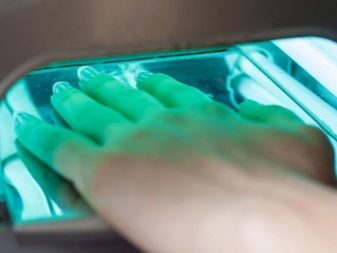
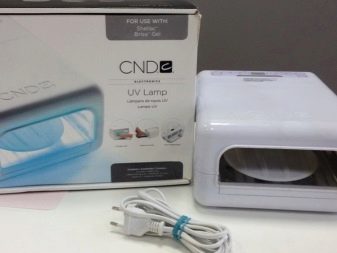
Varieties
Having decided to choose an ultraviolet lamp for manicure, you will be surprised at the huge selection. They can differ for several factors.
By capacity:
- for one hand (do not try to place all five fingers at the same time, for convenience and uniformity of polymerization, first dry four fingers, without a thumb);
- for two.
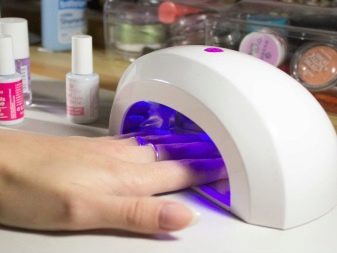
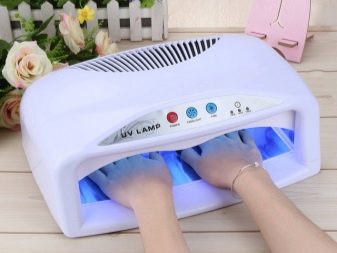
By color - the choice is quite large, you can pick it up for almost any interior or choose something for your mood.
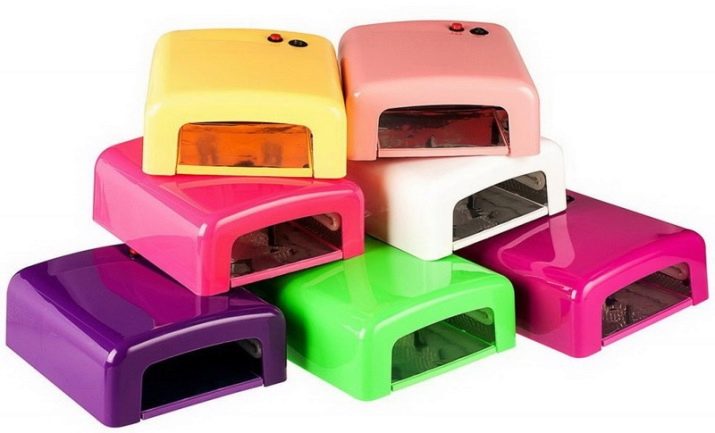
By form:
- can be closed (round, rectangular, fancy shape);
- models without a bottom part or with a pull-out bottom (in the form of an arch).
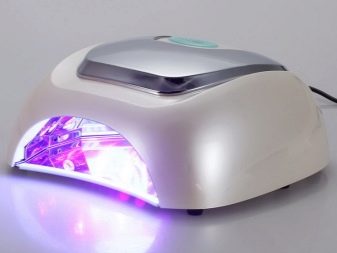

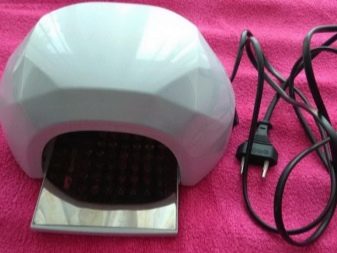

By lamp power they can be divided into two large groups:
- 9 and 18 watts;
- 36 and 54 W.
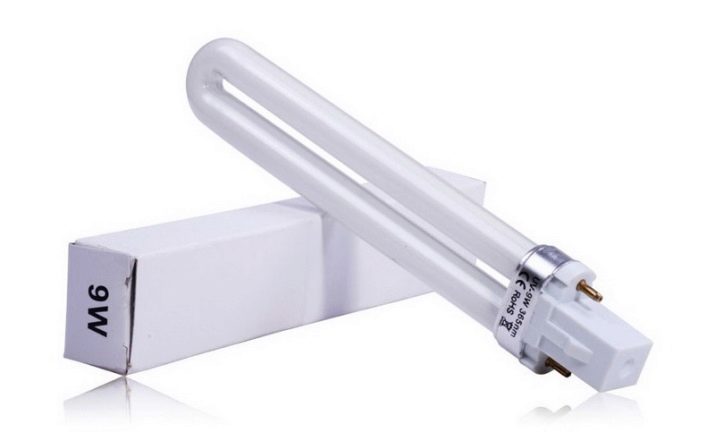
With an increase in power, the drying time proportionally decreases, but their price increases. Therefore, the first option is suitable if a person has just begun to master the coating of nails and does this only for himself or a narrow circle of loved ones. If a large amount of work is planned, various experiments in the field of materials and making a profit - it is better to choose the latter option.
Electrical appliances with a power of 54 watts are used for two hands and are most often seen in showrooms. Home-based manicurists usually choose simpler appliances. By the way, sometimes it is more profitable to purchase two hand dryers separately than for two at the same time.
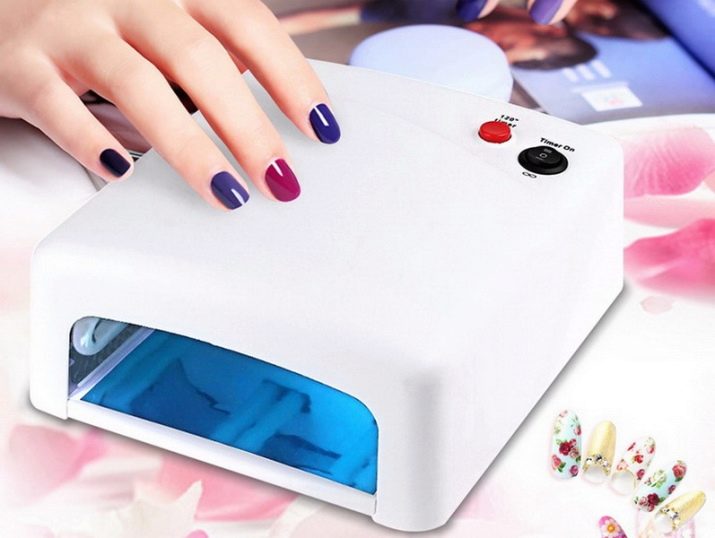
Depending on the ignition scheme, lamps are:
- electronic;
- induction.
The latter are heavier, with an additional launch element. If voltage drops are possible in the network, this option is preferable. Electronic ones are cheaper, but they fail more often. The marking is usually indicated on the lamp base along with the wattage.
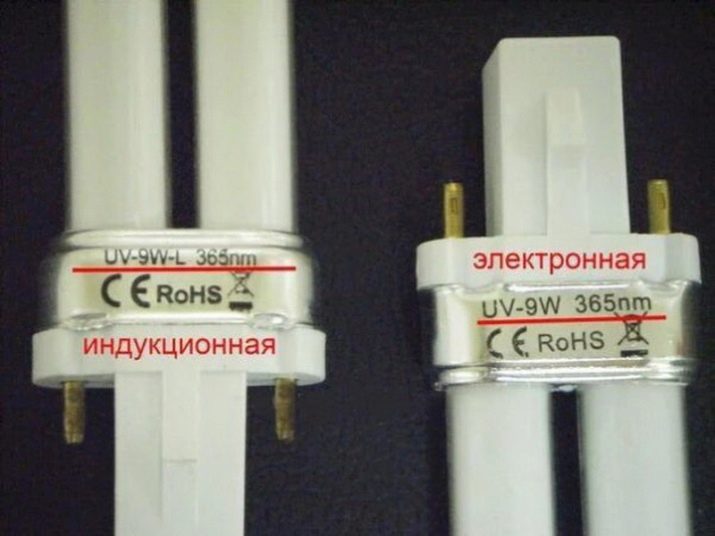
Selection recommendations
Making the right choice is not easy, especially when the modern market is literally replete with offers. Several nuances can affect this at once.
- First, decide what you need the device for. Think about how often you plan to use it. Often the services of a manicurist bring good additional income. Therefore, if you are a beginner, but admit the possibility of further training, choose the more powerful option. As a rule, the cost of the device quickly pays off, even if you decide to do a manicure for yourself, compared to going to the salon.
- Before purchasing the material, be sure to check with the seller if it is suitable for your type of lamps. Moreover, new options appear all the time, with different effects. Despite the fact that UV lamps are quite versatile in terms of materials, it is possible to predict how a new coating will look in the end only experimentally.
- Find out in advance where you can purchase replacement lamps. And also take care of the uninterruptible power supply, as nail dryers are quite sensitive to voltage surges.
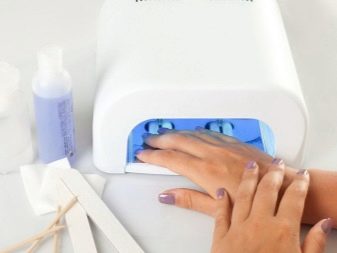
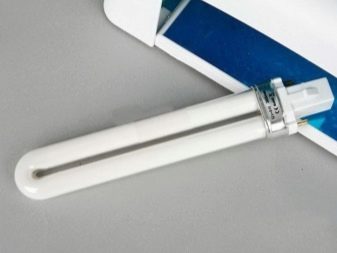
There are many manufacturers on the market. A nail dryer can be purchased online or directly from a professional shop. Be sure to read the reviews. The device must have a guarantee, then there will be no problems with its maintenance in case of deficiencies. Make sure that it is accompanied by instructions in Russian, carefully read the rules of use and care.
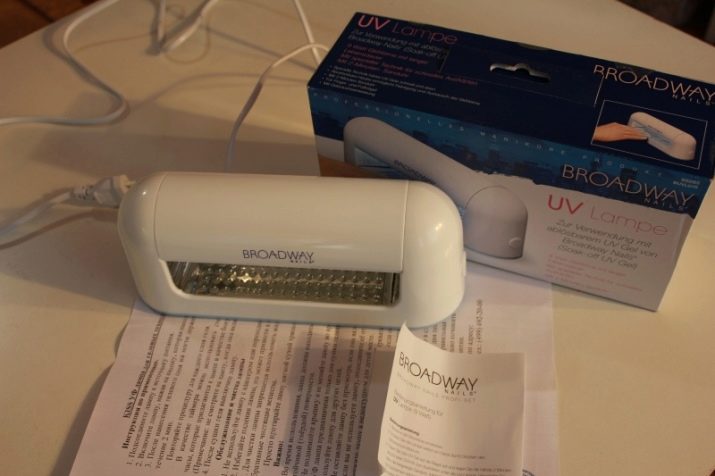
It is better not to buy second-hand devices from your hands, since you do not know how they were used. Internal and external surfaces are often dirty and many owners use aggressive cleaning agents that are not acceptable in this case.
For information on how to choose a UV lamp for gel polish, see the next video.








